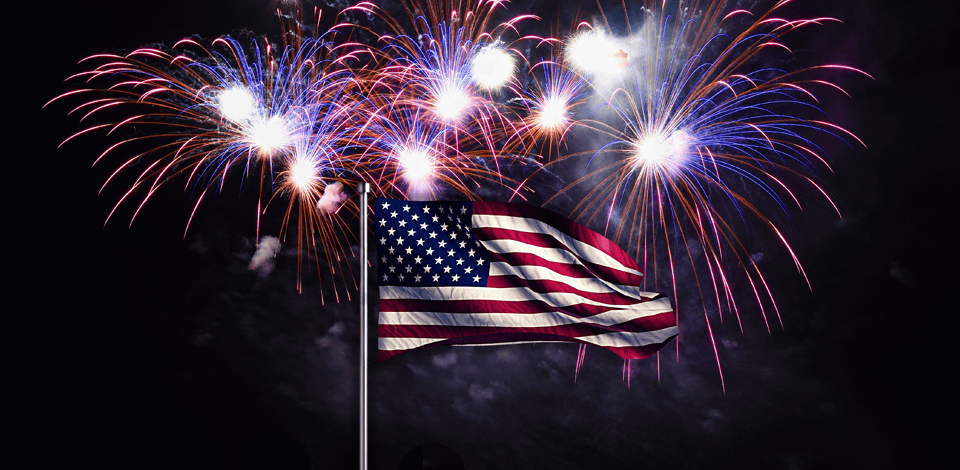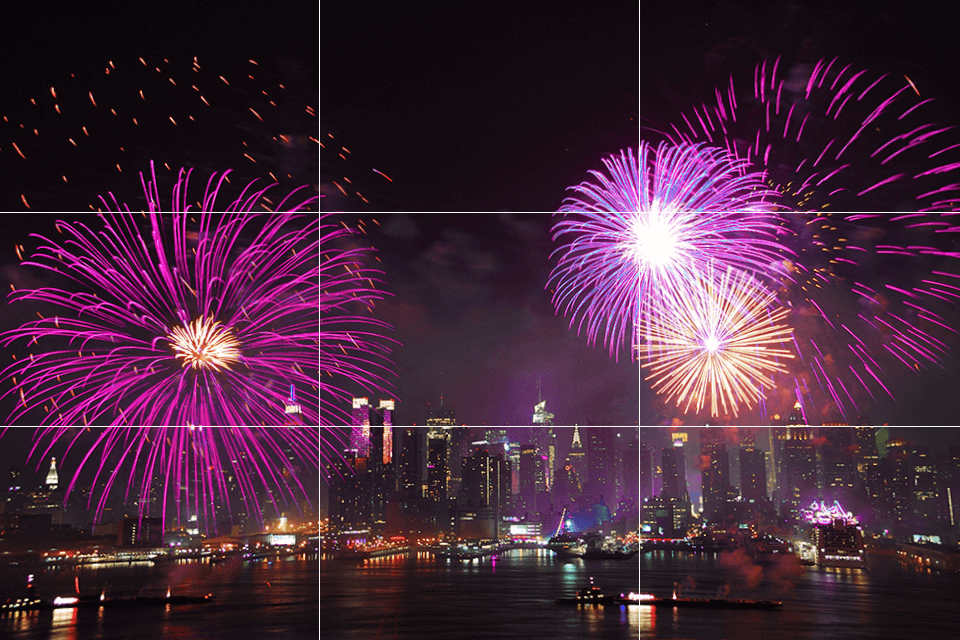
When you hear the first dull "boom!" in the sky, it's already too late to run for your camera to photograph fireworks. The most beautiful moments usually last just seconds, so preparation is everything.
I’ve been shooting fireworks for years, and I know one thing for sure: a great shot isn’t luck, it’s all about the details. Here’s my handy guide on how to photograph fireworks that includes proven settings to little tricks that make photos truly spectacular.
I also want to share this handy table with different firework types, recommended camera settings, and tips for each:
| Firework Type | Description | Best Shutter Speed | Extra Tips |
|---|---|---|---|
|
Burst Shell
|
Classic explosion, spreads symmetrically from the center
|
3-4 seconds
|
Start shooting at launch - peak at full burst. Wide-angle lenses love these!
|
|
Falling Sparks
|
Sparks "rain" down like a glowing waterfall
|
6-8 seconds
|
Lower ISO (less noise). Sweet spot: f/8 – f/11 for crisp trails.
|
|
Grand Finale
|
Multiple bursts at once - brightest but trickiest!
|
1-2 seconds
|
Tighten the aperture (f/11–f/13) to avoid blown-out highlights. ISO 100 = cleanest shot.
|
Fireworks photography isn't about luck. The right location can make your shot spectacular or completely ruin it. That's why I never shoot without being unaware of the shooting spot. Before heading out, I do my homework: I open Google Maps or Google Earth, find the launch site, and analyze the perfect place for taking pics.
I’m always looking for excellent foregrounds! A crowd gazing up in wonder or a striking landmark instantly adds life to your shot.
Bonus Tip: Always check the wind direction! Stand downwind, and smoke will ruin your shots after just a few bursts. Instead, position yourself upwind, and let the fireworks drift away from your lens, not into it.

We've all thought "I'll make it just in time!" – until we don't. I learned this lesson when traffic made me miss an entire show, arriving just as the final burst of fireworks faded. Now I arrive 90 minutes early every time. And you know what? I've never regretted such a decision.
It’s important because:
Must-Pack Gear (Even When I Think I Might Not Need It)
You can even photograph fireworks on an old DSLR – the key is having manual controls. Here's my go-to starting setup:
| Setting | Value | Comment |
|---|---|---|
|
2-6 seconds
|
Longer exposure - brighter light trail
|
|
|
f/8-f/11
|
Keep everything sharp without chromatic distortions
|
|
|
100-200
|
Less noise
|
|
|
Focus
|
Manual, set to infinity
|
Always better results
|
Never use auto mode. Your camera might try to "turn night into day" and you'll get washed-out, overexposed shots.
Even on the sturdiest tripod, pressing the shutter button can cause tiny vibrations. You might not see them, but during long exposures, they blur firework trails, making them look soft or smeared. This is especially noticeable with zoom lenses.
So, I always use one of the two options:
If your camera supports mobile app control (like Canon Camera Connect (iOS/Android), Nikon SnapBridge (iOS/Android), Sony Imaging Edge (iOS/Android), it’s a total game-changer. You can control your camera right from your phone and see exactly what you're shooting!
Fireworks alone are just abstract lights. A great photo tells a story: it has emotion and atmosphere. That’s why I always look for composition elements that give my shots meaning.
When photographing fireworks, I often include:

Fireworks are perfect for experiments! Here are cool tricks I've tested that really work:

As one of the best night photo ideas, fireworks look best when shot right, but even after shooting, you can add some special flavor. For quick edits, I use Lightroom or Camera Raw.
What I do:
When photographing fireworks at night, novices don’t always consider weather conditions.
Rain
Fog or Smoke
Wind
Smartphone cameras struggle in the dark, constantly refocusing and adjusting brightness with each explosion. The result? Blurry, overexposed, or too-dark shots.
To fix this, I always lock focus and exposure manually:
How to do it:
Best for: Capturing everything in your shot - the fireworks in the sky, the landscape below, people watching, water reflections, and buildings - you'll want a wide-angle lens. This works best when you're near the fireworks launch area or want to include famous landmarks and crowds in your photo. You'll get breathtaking “sky packed with fireworks” pictures and ideal symmetrical compositions showing reflections in water or architecture when using 14mm or 20mm lenses.
Best for: This lens gives me perfectly composed shots with crisp details and little distortion. It's my favorite choice when I'm shooting from a middle distance - sharp firework trails with just enough background context, like excited crowds beneath the explosions.
Best for: When you can't get close to the action or want simple, powerful images of just the fireworks themselves, this lens is ideal. It removes all distractions from your shots, letting the colorful explosions stay in focus. Perfect for getting crisp explosion details that blend beautifully when combined later.